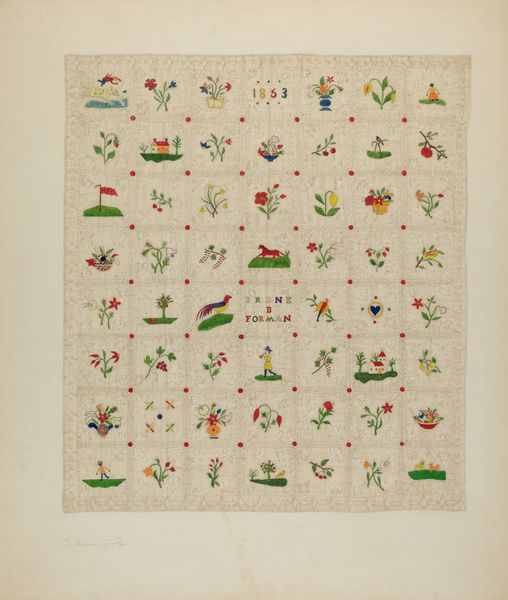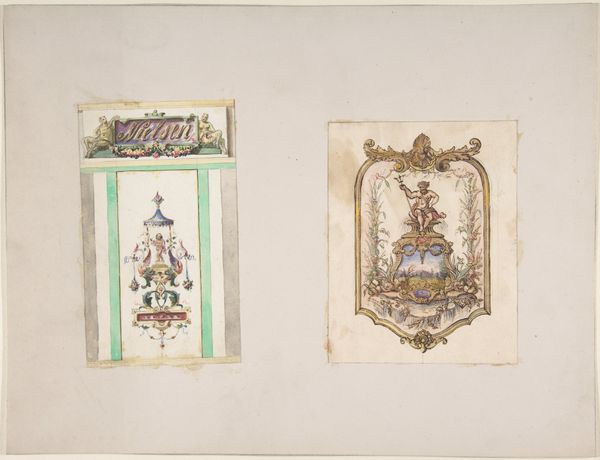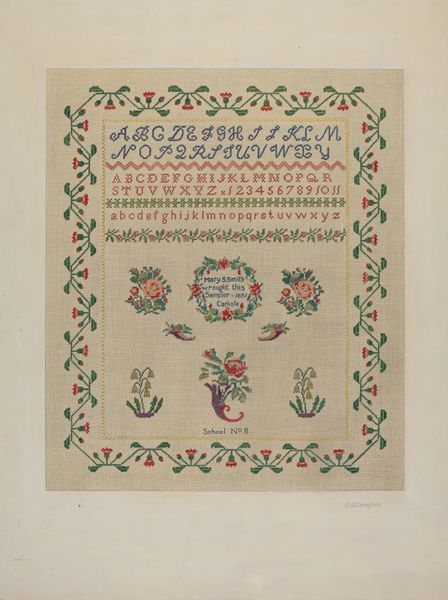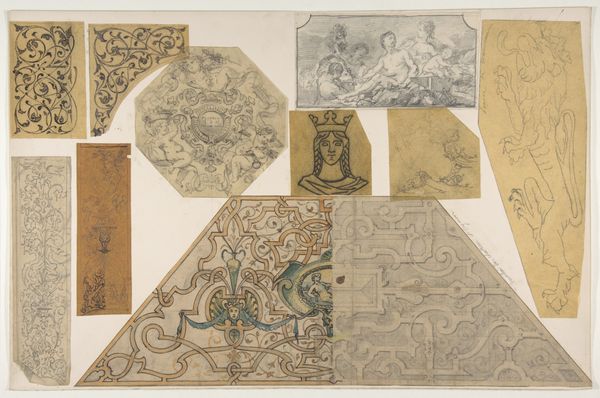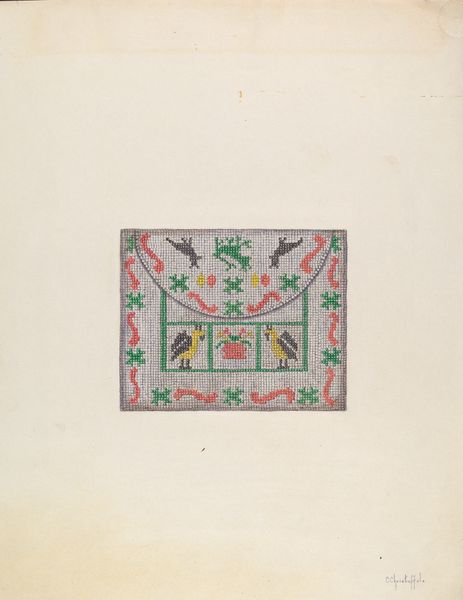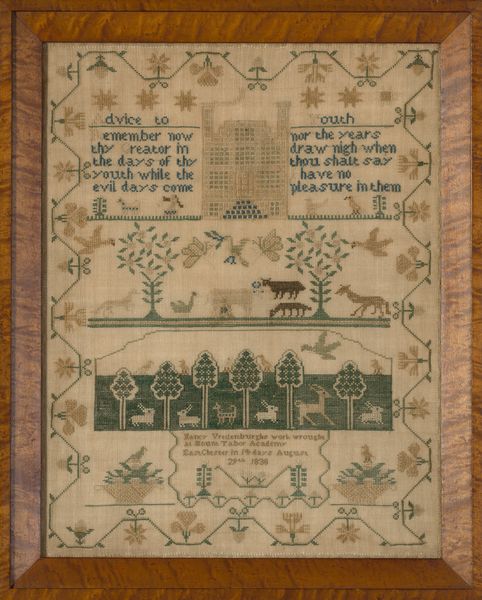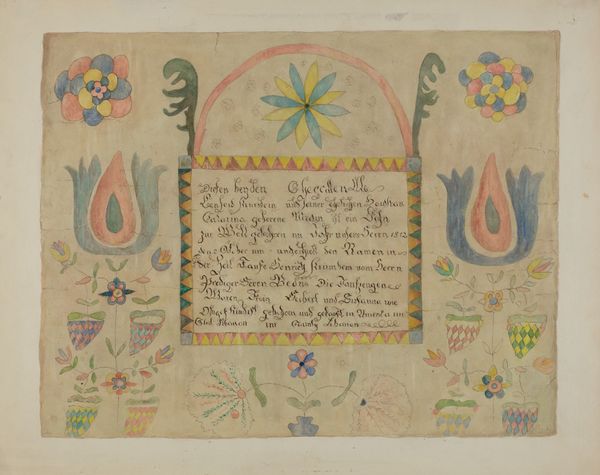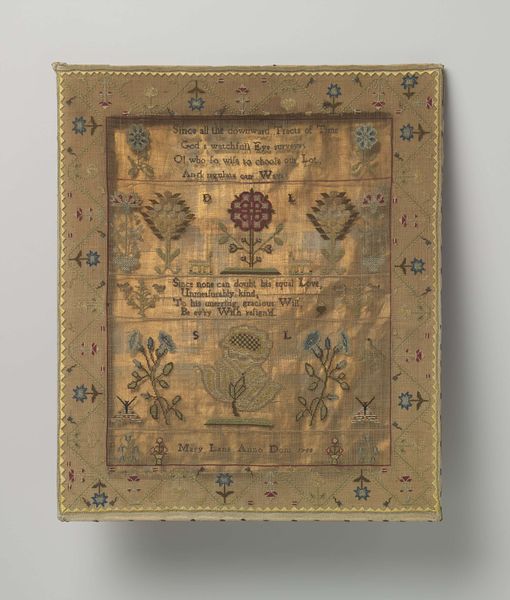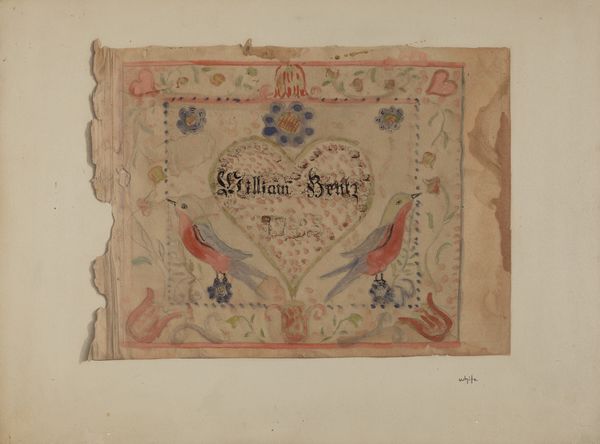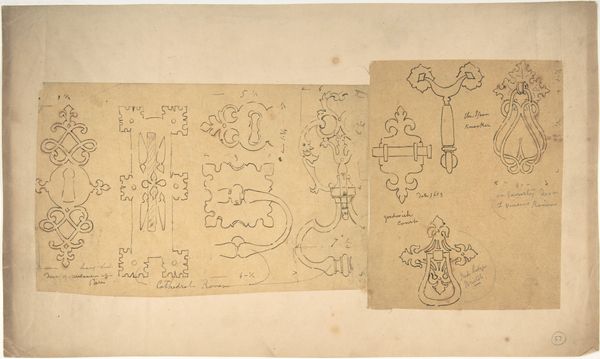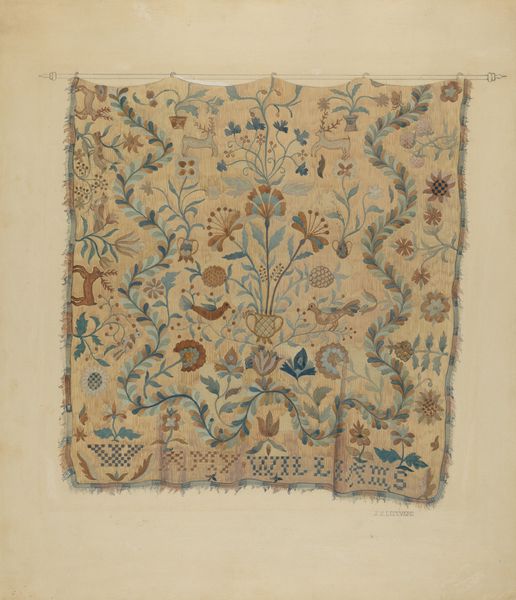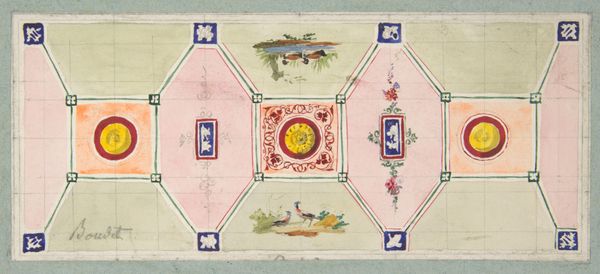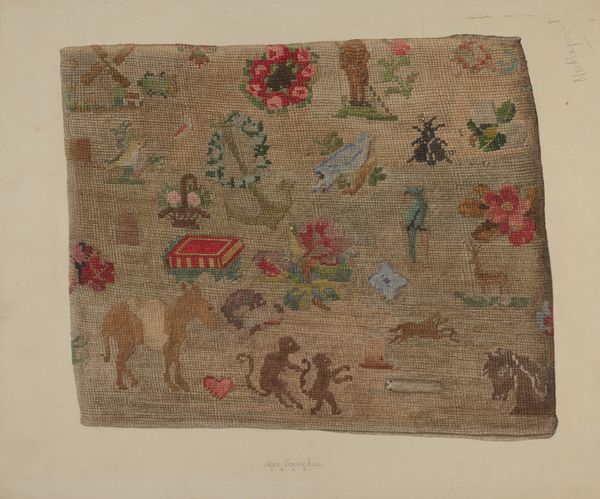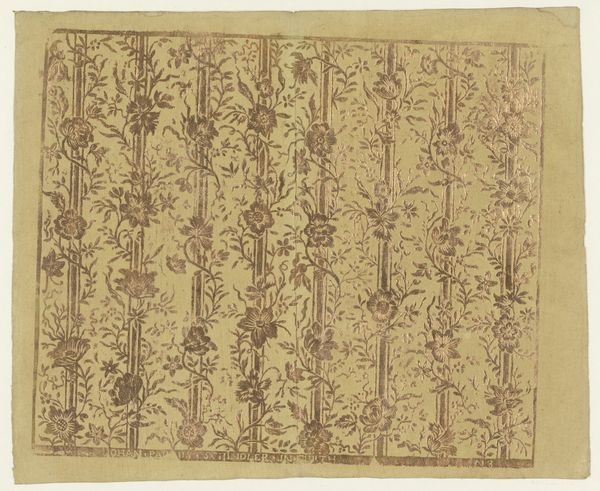
drawing, mixed-media, fibre-art, textile
#
drawing
#
mixed-media
#
fibre-art
#
water colours
#
textile
#
folk-art
#
decorative-art
Dimensions: overall: 32.6 x 51.9 cm (12 13/16 x 20 7/16 in.) Original IAD Object: 17 1/2" wide; 21 3/4" high
Copyright: National Gallery of Art: CC0 1.0
Editor: We're looking at "Sampler," a mixed-media fiber art piece, likely a textile and drawing combination, created around 1937 by Clyde L. Cheney. The stitched figures are so charming. What kind of historical perspective do you have on something like this? Curator: This piece gives us insight into the history of domestic arts and women’s work, particularly in the early 20th century. Samplers were historically viewed as educational tools, demonstrating a young woman's proficiency in needlework, literacy, and even moral virtue. But by the 1930s, the role of women was already changing significantly with increased entry into public life, wouldn't you agree? Editor: Definitely! How does that societal shift influence how we view the sampler now, then? Curator: Well, this work can be seen as a bridge between traditional roles and the modern era. Notice the poem in the center; it speaks of piety. Yet, alongside traditional motifs like the eagle, bird, and flower pots, are modern stylistic choices in color and composition. Are you struck by its composition? It's more like an arranged study, a visual collection, which separates it from earlier symmetrical and purely textual samplers. Editor: Yes, it feels less about proving skill and more about artistic expression. Do you think folk art designation marginalizes the political implications of the samplers displayed here? Curator: That’s a fantastic question! It’s crucial to remember that seemingly ‘domestic’ art forms were historically a significant sphere of activity and influence for women and sometimes allowed an emotional register and expressive creativity unavailable elsewhere. By recognizing this sampler's place within the broader history of women's labor and creativity, we understand this piece not as just a charming craft but as a cultural artifact reflecting broader shifts in gender roles and societal expectations. Editor: I hadn't thought about the broader context of cultural significance of a sampler like that! It is interesting to explore art through gender roles of that era. Curator: Absolutely. Recognizing these hidden values really gives it an artistic value. It certainly helps me consider this art work outside of the immediate appreciation of its folk art components.
Comments
No comments
Be the first to comment and join the conversation on the ultimate creative platform.
